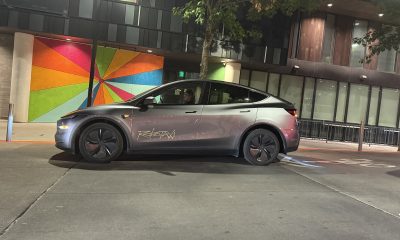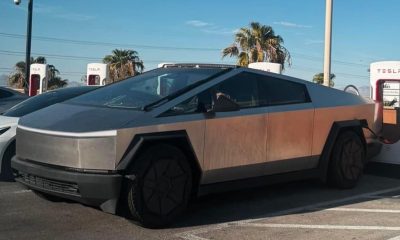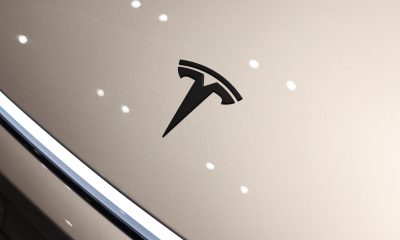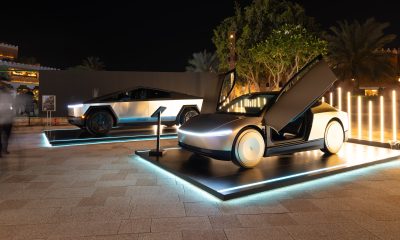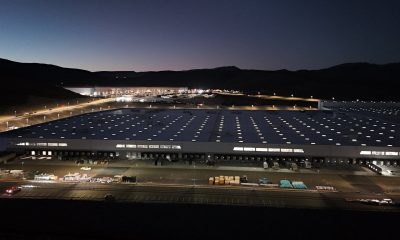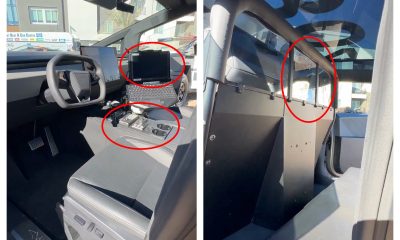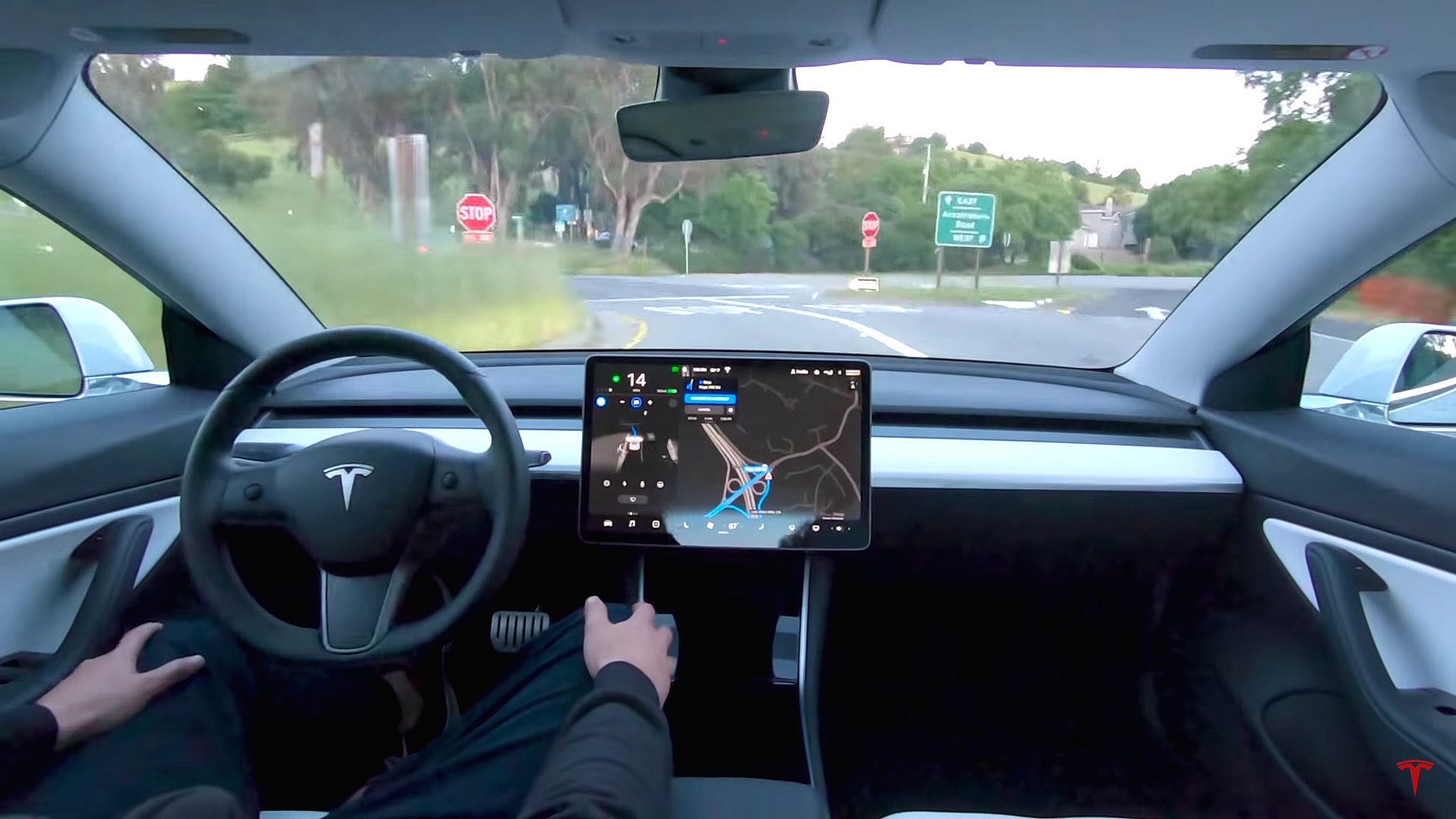
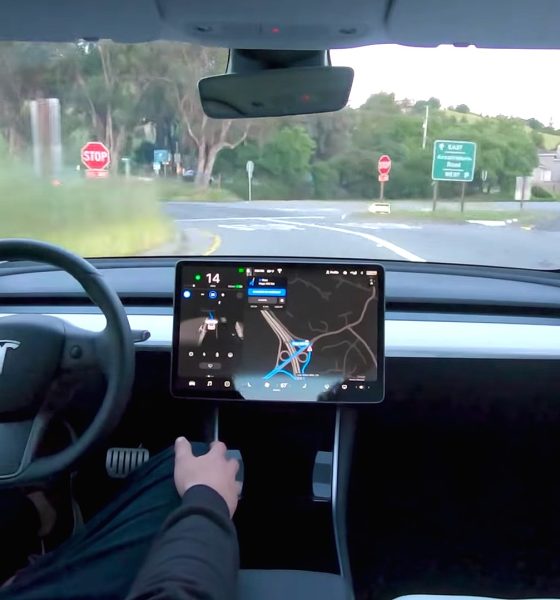
News
Tesla bull asks Elon Musk for Full Self-Driving value to be added with vehicle trade-in
Tesla will consider adding monetary value to its Full Self-Driving suite when an owner is attempting to trade-in their vehicle. The company is looking into the possibility following a request to Elon Musk from notable Wall Street analyst and Tesla bull Pierre Ferragu.
Ferragu, an analyst from New Street Research, currently owns a Model 3 equipped with Tesla’s Full Self-Driving suite. After purchasing the self-driving capability in November, Ferragu said he is interested in upgrading from a Model 3 to a Model Y. Still, he isn’t pleased about paying the $10,000 price tag for the semi-autonomous driving feature when he recently shelled out the money for the Model 3.
Tesla’s Full Self-Driving suite is what the company may be most known for outside of its highly-advanced electric vehicle tech, which has made it the undeniable leader in the EV sector. However, the Full Self-Driving suite is not included with the purchase of the vehicle like Basic Autopilot is, and to have the FSD capabilities, the owner must pay $10,000 on top of the price of the car.
“@elonmusk: I paid FSD for my Model 3 in November. I now want to upgrade to model Y and your team tells me you don’t value FSD in your trade-in offer because you can do the software upgrade for free. Want me to pay again full price for FSD again? That’s not fair, change that!” Ferragu tweeted to Musk.
@elonmusk: I paid FSD for my Model 3 in November. I now want to upgrade to model Y and your team tells me you don’t value FSD in your trade-in offer because you can do the software upgrade for free. Want me to pay again full price for FSD again? That’s not fair, change that!
— Pierre Ferragu (@p_ferragu) January 16, 2021
Musk and Tesla are considering adding the transfer or giving some credit toward an FSD-equipped vehicle’s trade-in value. Currently, the issue is that Tesla is not giving any monetary value to the FSD suite when someone wishes to trade in their car toward a new one. This would effectively mean that FSD makes the car no more or less valuable than it would be without the functionality equipped. This is causing a dilemma with some owners who wish to upgrade or change their Tesla vehicle as it would require paying another hefty $10,000 fee.
ALSO READ:
Tesla FSD Beta completes LA to Silicon Valley drive with zero interventions
Musk stated that he would look into the possibility of having FSD add value to a trade-in. The reason Tesla didn’t consider it before, according to Ferragu, is because the company can activate the functionality to any vehicle for free.
Looking into this. No question that FSD should be viewed as reasonably valuable when doing a trade-in.
— Elon Musk (@elonmusk) January 18, 2021
Other owners would be interested in a one-time transfer to a new vehicle, which would be advantageous for multiple scenarios. One would be if a family has two Teslas, but one is driven more than another. If the new car will be driven more frequently, but the current car has FSD, some owners may want to transfer the self-driving capability to the new vehicle. Another situation that would give owners some more leeway would be if they are trading an FSD-equipped vehicle in for a new Tesla. If their FSD purchase was recent and at the same price point as the current $10,000 tag, the feature could be transferred to the new car. If the owner paid less, Tesla could require the owner to pay the difference.
Tesla has been known to listen to real-world owners and use the feedback to improve their cars. Musk will likely update the development as it is figured out. It will be interesting to see how the company values FSD through trade-ins or if it will take the route of a transfer option for recent buyers of the Full Self-Driving suite.
News
Tesla expands Robotaxi geofence, but not the garage
This has broadened its geofence to nearly three times the size of Waymo’s current service area, which is great from a comparative standpoint. However, there seems to be something that also needs to be expanded as the geofence gets larger: the size of the Robotaxi fleet.
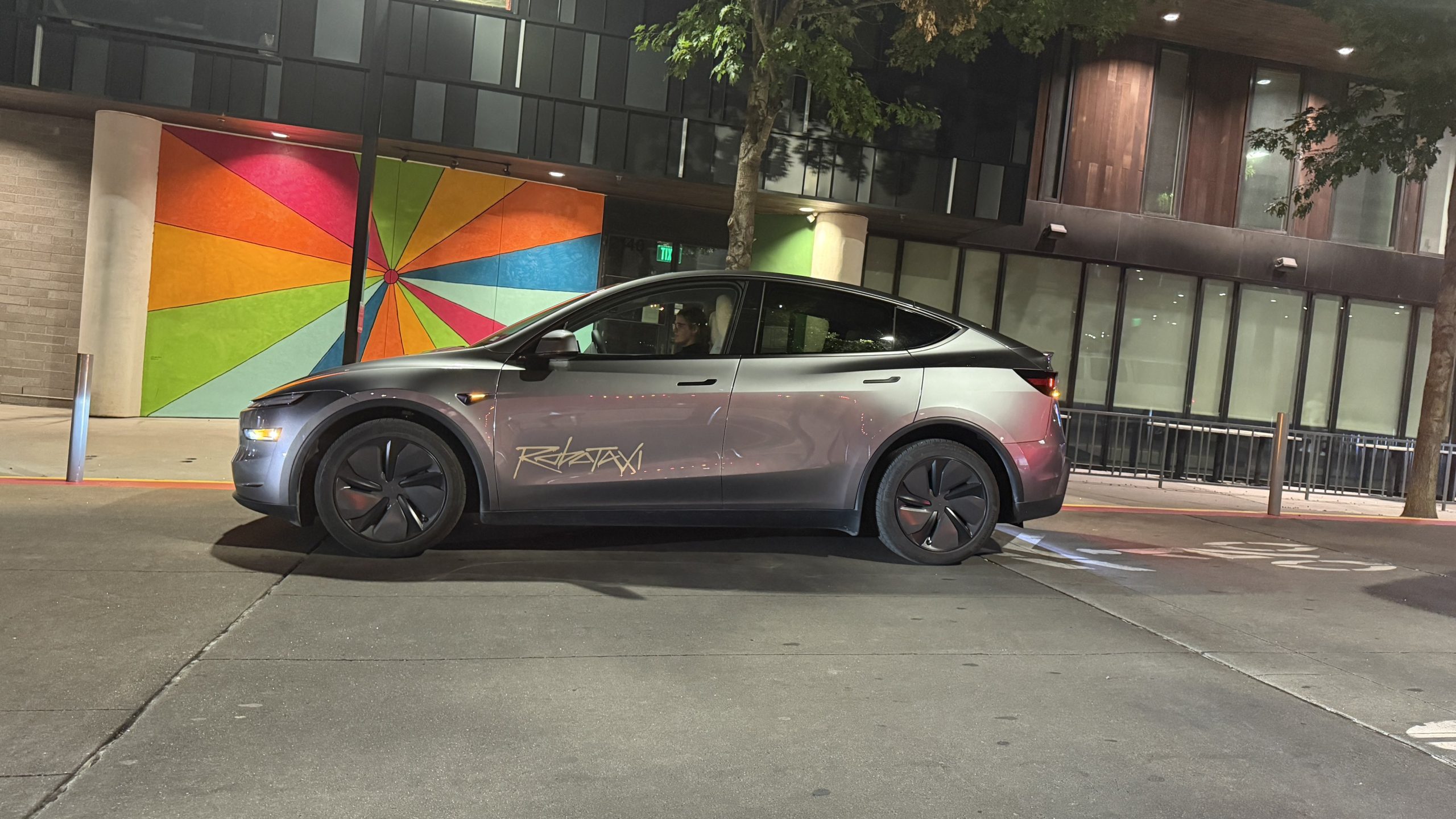
Tesla has expanded its Robotaxi geofence four times, once as recently as this week.
However, the company has seemingly kept its fleet size relatively small compared to the size of the service area, making some people — even pro-Tesla influencers — ask for more transparency and an expansion of the number of vehicles it has operating.
Over the past four months, Tesla has done an excellent job of maintaining growth with its service area in Austin as it continues to roll out the early stages of what is the Robotaxi platform.
The most recent expansion brought its size from 170 square miles (440.298 sq. km) to 243 square miles (629.367 sq. km).
Tesla sends clear message to Waymo with latest Austin Robotaxi move
This has broadened its geofence to nearly three times the size of Waymo’s current service area, which is great from a comparative standpoint. However, there seems to be something that also needs to be expanded as the geofence gets larger: the size of the Robotaxi fleet.
Tesla has never revealed exactly how many Model Y vehicles it is using in Austin for its partially driverless ride-hailing service (We say partial because the Safety Monitor moves to the driver’s seat for freeway routes).
When it first launched Robotaxi, Tesla said it would be a small fleet size, between 10 and 20 vehicles. In late August, after its second expansion of the service area, it then said it “also increased the number of cars available by 50 percent.”
The problem is, nobody knows how many cars were in the fleet to begin with, so there’s no real concrete figure on how many Robotaxis were available.
This has caused some frustration for users, who have talked about the inability to get rides smoothly. As the geofence has gotten larger, there has only been one mentioned increase in the fleet.
Trying to book a RoboTaxi in the new geofence and can’t get paired with a car.
Really think Tesla needs to add more cars to the fleet in Austin. Has become tougher and tougher to use the service reliably @elonmusk pic.twitter.com/KHqea3oUxU
— Farzad (@farzyness) October 29, 2025
Tesla did not reveal any new figures or expansion plans in terms of fleet size in the recent Q3 Earnings Call, but there is still a true frustration among many because the company will not reveal an exact figure.
News
Tesla recalls 6,197 Cybertrucks for light bar adhesive issue
On October 20, Tesla issued a voluntary recall of the impacted vehicles and has identified 619 warranty claims and just a single field report that is related to the issue.
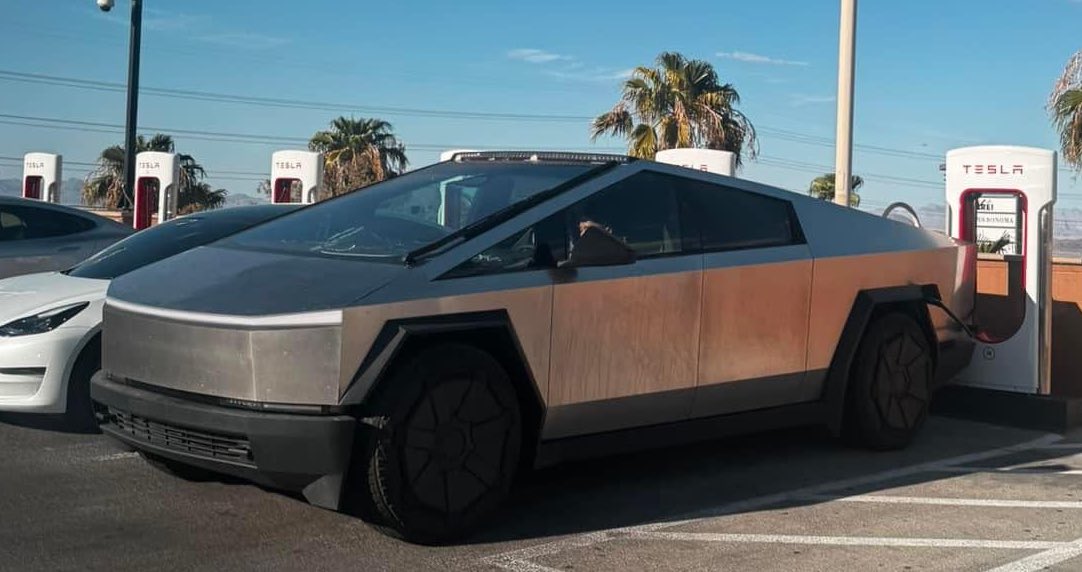
Tesla has recalled 6,197 Cybertrucks for a light bar adhesive issue that was utilized by Service to install the aftermarket part.
According to the National Highway Traffic Safety Administration (NHTSA), impacted vehicles may have had the light bar “inadvertently attached to the windshield using the incorrect surface primer.”
Tesla identified an issue with the light bar’s adhesion to glass back in February and worked for months to find a solution. In October, the company performed chemical testing as a part of an engineering study and determined the root cause as the BetaPrime primer it utilized, figuring out that it was not the right surface priming material to use for this specific application.
On October 20, Tesla issued a voluntary recall of the impacted vehicles and has identified 619 warranty claims and just a single field report that is related to the issue.
The component is manufactured by a Romanian company called Hella Romania S.R.L., but the issue is not the primer’s quality. Instead, it is simply the fact that it is not the correct adhesive for this specific type of application.
Tesla says there are no reports of injuries or deaths due to this issue, and it will be resolved. In the 473 report that the NHTSA released this morning, Tesla said:
“At no charge to customers, Tesla will inspect the service-installed optional off-road light bar accessory for delamination or damage and if either is present, replace the light bar with a new light bar adhered with tape and a positive mechanical attachment. If no delamination or damage is present, Tesla will retrofit the service-installed optional off-road light bar accessory with a positive mechanical attachment.”
This is the third recall applied to Cybertrucks this year, as one on March 18 highlighted the potential for exterior trim panels to detach while driving, and another earlier this month when the NHTSA said its front parking lights were too bright.
Tesla resolved the first with a free assembly replacement, while the headlight issue was fixed with an Over-the-Air software update earlier this week. Owners said there was a noticeable difference in the brightness of the lights now compared to previously.
Investor's Corner
Tesla investor Calpers opposes Elon Musk’s 2025 performance award
Musk’s 2025 pay plan will be decided at Tesla’s 2025 Annual Shareholder Meeting, which will be held on November 6 in Giga Texas.

One of the United States’ largest pension funds, the California Public Employees’ Retirement System (Calpers), has stated that it will be voting against Elon Musk’s 2025 Tesla CEO performance award.
Musk’s 2025 pay plan will be decided at Tesla’s 2025 Annual Shareholder Meeting, which will be held on November 6 in Giga Texas. Company executives have stated that the upcoming vote will decide Tesla’s fate in the years to come.
Why Calpers opposes Musk’s 2025 performance award
In a statement shared with Bloomberg News, a Calpers spokesperson criticized the scale of Musk’s proposed deal. Calpers currently holds about 5 million Tesla shares, giving its stance meaningful influence among institutional investors.
“The CEO pay package proposed by Tesla is larger than pay packages for CEOs in comparable companies by many orders of magnitude. It would also further concentrate power in a single shareholder,” the spokesperson stated.
This is not the first time Calpers has opposed a major Musk pay deal. The fund previously voted against a $56 billion package proposed for Musk and criticized the CEO’s 2018 performance-based plan, which was perceived as unrealistic due to its ambitious nature at the time. Musk’s 2018 pay plan was later struck down by a Delaware court, though Tesla is currently appealing the decision.
Musk’s 2025 CEO Performance Award
While Elon Musk’s 2025 performance award will result in him becoming a trillionaire, he would not be able to receive any compensation from Tesla unless aggressive operational and financial targets are met. For Musk to receive his full compensation, for example, he would have to grow Tesla’s market cap from today’s $1.1 trillion to $8.5 trillion, effectively making it the world’s most valuable company by a mile.
Musk has also maintained that his 2025 performance award is not about compensation. It’s about his controlling stake at Tesla. “If I can just get kicked out in the future by activist shareholder advisory firms who don’t even own Tesla shares themselves, I’m not comfortable with that future,” Musk wrote in a post on X.
-

 Elon Musk2 weeks ago
Elon Musk2 weeks agoSpaceX posts Starship booster feat that’s so nutty, it doesn’t even look real
-

 Elon Musk2 weeks ago
Elon Musk2 weeks agoTesla Full Self-Driving gets an offer to be insured for ‘almost free’
-

 News2 weeks ago
News2 weeks agoElon Musk confirms Tesla FSD V14.2 will see widespread rollout
-

 News2 weeks ago
News2 weeks agoTesla is adding an interesting feature to its centerscreen in a coming update
-

 News2 weeks ago
News2 weeks agoTesla launches new interior option for Model Y
-

 News2 weeks ago
News2 weeks agoTesla widens rollout of new Full Self-Driving suite to more owners
-

 Elon Musk2 weeks ago
Elon Musk2 weeks agoTesla CEO Elon Musk’s $1 trillion pay package hits first adversity from proxy firm
-

 News2 weeks ago
News2 weeks agoTesla might be doing away with a long-included feature with its vehicles


